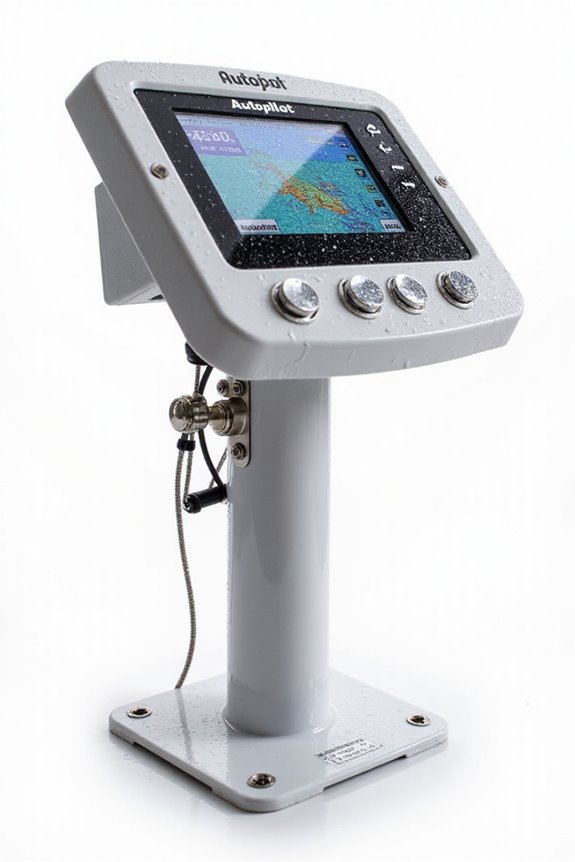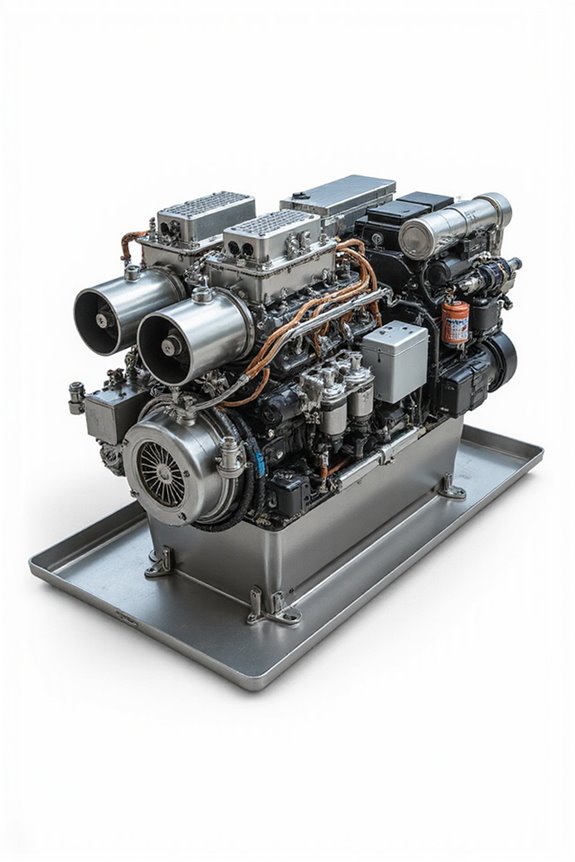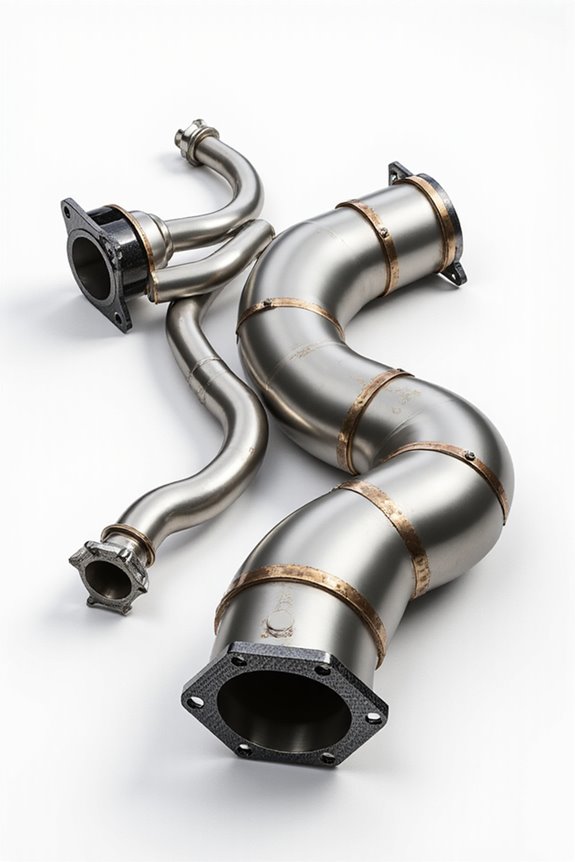So, Integrated Bridge Systems (IBS) are like your yacht’s nervous system, combining radar, GPS, helm controls, and alarms into one slick setup that keeps navigation and safety seamless. We get real-time info at our fingertips, cutting down mistakes and boosting teamwork onboard. Sure, it takes some training to avoid info overload and keep manual skills sharp, but the efficiency and safety gains are worth it. Stick around to see how IBS evolved and what challenges might pop up.
Key Takeaways
- IBS centralizes navigation and control data to enhance safety and streamline bridge operations on yachts.
- It integrates sensors like radar and GPS with user-friendly interfaces for efficient monitoring and decision-making.
- IBS allows seamless data sharing and system redundancy to ensure backup during critical navigation tasks.
- Benefits include improved route planning, automated steering, fuel savings, and reduced crew workload.
- Operators must receive training to manage information effectively and maintain manual navigation skills alongside automation.
Definition and Purpose of Integrated Bridge Systems
Let’s plunge into what an Integrated Bridge System, or IBS, really is and why it matters. Imagine a central hub where all your ship’s navigation and control data come together on one screen—that’s IBS technology in action. It links various sensors and controls so the crew can monitor everything easily, cutting down confusion and human error. Why’s this important? Because maritime safety depends on quick, accurate decisions, especially out at sea. Plus, IBS isn’t one-size-fits-all; it adapts to different ship layouts, making sure the system works smoothly for every vessel. In a way, it’s like having a well-organized command center on your bridge, keeping things running safely and efficiently. Who wouldn’t want that kind of reliability on the water?
Core Components and Functionalities of IBS
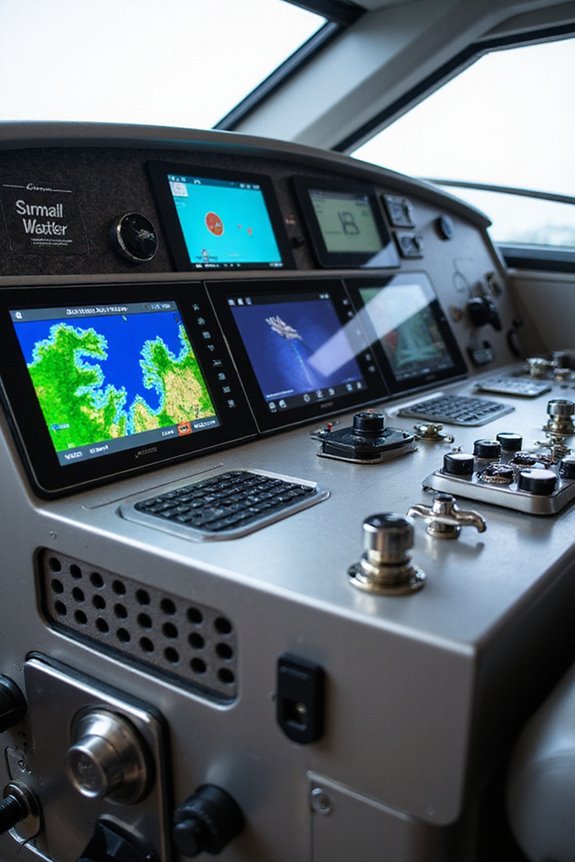
Though it might sound like high-tech wizardry, the core components and functionalities of an Integrated Bridge System (IBS) are actually pretty straightforward once you break them down. At its heart, the IBS combines essential sensor technologies—like radar for spotting other vessels, GPS for pinpoint accuracy, and gyro compasses that never lose their way. These feed data into intuitive user interfaces, such as multifunction workstations and electronic chart displays, making navigation smoother and less stressful. We also have vital controls—think helm management and propulsion monitoring—all accessible from the bridge. Plus, alarm systems keep everyone alert without overwhelming us. It’s like the IBS wraps everything together so the crew feels confident and connected. After all, who wouldn’t prefer a bridge system that’s smart without being complicated?
Integration and Interoperability in Yachting Applications
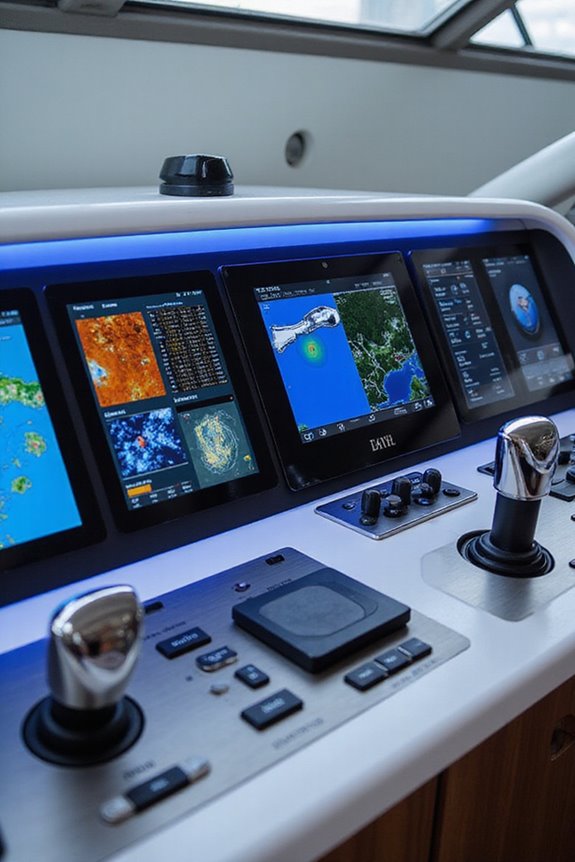
Three key factors make Integrated Bridge Systems (IBS) a game-changer for yachting: integration, interoperability, and adaptability. When various bridge subsystems—like radar, ECDIS, and AIS—are linked, data sharing happens seamlessly. This means anyone on board can access up-to-date navigation info from any workstation, keeping us all on the same page. Plus, these systems aren’t just cozy roommates; they’re built with system redundancy, offering backup layers that keep operations smooth, even if one part goes on the fritz. And let’s be honest—who wants to fiddle with a jumble of gadgets that don’t talk? IBS’s open design plays nicely with other onboard management tools, making sure nothing operates in a silo. It’s like having a crew where everyone knows the plan and sticks to it—a true team effort on the waves.
Benefits of Using IBS on Yachts
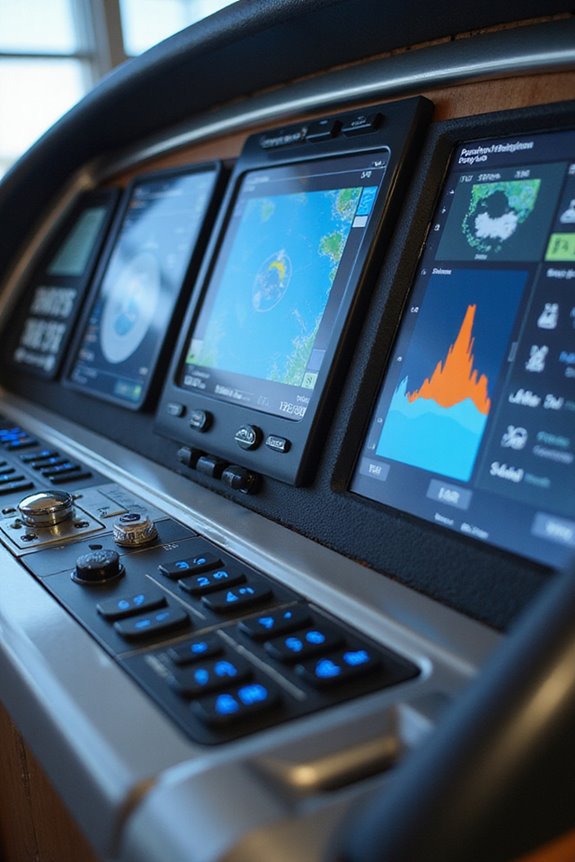
Now that we’ve seen how integration keeps everything running smoothly on your yacht’s bridge, let’s talk about why having an Integrated Bridge System (IBS) actually makes life better out at sea. First off, safety enhancements are a big deal—centralized alerts and real-time 3-D hazard displays mean we spot dangers faster, helping everyone onboard feel more secure. Plus, with all systems talking to each other seamlessly, miscommunication becomes nearly extinct. But it’s not just about safety; operational savings are pretty sweet too. IBS streamlines route planning and automates steering, cutting down on fuel and time wasted. And since it lets fewer folks handle the ship more comfortably, we save on labor costs without losing control. So yeah, IBS isn’t just smart—it’s a real game-changer for those of us who love the water.
Evolution and Historical Development of IBS Technology
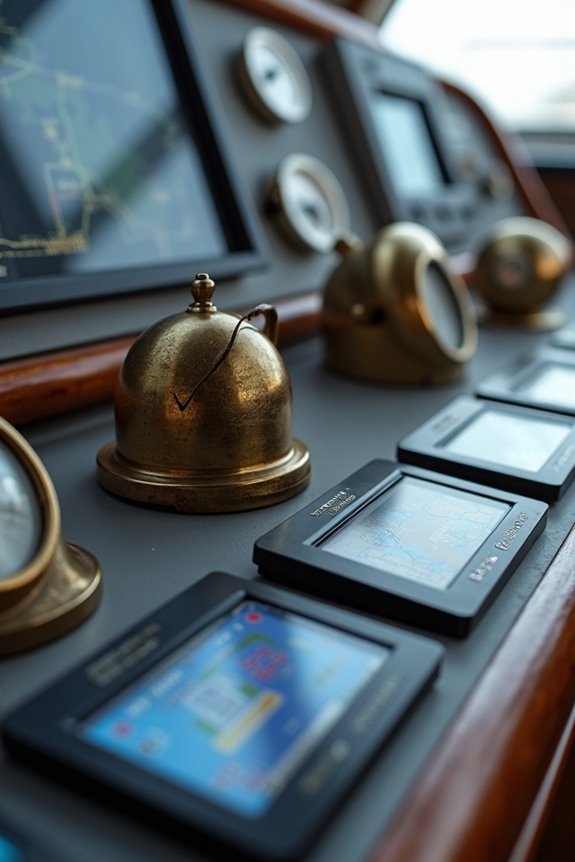
Once we start looking under the hood of Integrated Bridge Systems (IBS), it’s clear they didn’t just pop up overnight on yachts—they actually have roots deep in naval history. From early naval vessels like the German Navy’s corvette “Braunschweig,” IBS began as a way to centralize control and boost safety. Key historical milestones, such as the 1996 IMO Resolution MSC.64(67), set the stage for modular, interoperable designs that we rely on today. Technological advancements like GPS, ECDIS, and AIS steadily enhanced navigation precision. Over time, these systems evolved from bulky setups to sleek, user-friendly interfaces, blending seamlessly into yacht environments. So yeah, IBSs didn’t just happen—they’re the result of decades of thoughtful innovation making yachting smarter and safer for all of us.
Challenges and Considerations for Yacht Operators
While Integrated Bridge Systems (IBS) promise to make yacht navigation smoother and safer, they bring a fair share of challenges for operators like us. For starters, operator training is essential; IBS can overwhelm us with info, and varying system ergonomics across brands mean no two bridges feel quite the same. Ever struggled to find a control when seconds matter? That’s where ergonomics either help or haunt us. Plus, relying too much on automation might dull our manual skills—something we definitely want to avoid. Integration puzzles also pop up—mixing old gear with new IBS parts isn’t always seamless, and costly, too. So, mastering these systems means more than just pushing buttons; it’s about smart training, adapting quickly, and maintaining sharp situational awareness, especially when the sea throws us curveballs. Ensuring you have corrosion-resistant and durable gear can significantly enhance the reliability of your IBS components in challenging conditions.
Frequently Asked Questions
How Does IBS Training Differ for Crew on Large Yachts Versus Commercial Vessels?
It is understood crew training differs due to operational differences: commercial vessels follow strict regulations with standardized courses, while large yachts have tailored, modular training focusing on luxury systems and guest safety, reflecting our unique operational needs together.
What Are the Most Common IBS Manufacturers Used in Luxury Yachting?
Like stars guiding a night sky, top IBS manufacturers—Anschütz, Kongsberg, Sperry Marine, Alewijnse, and E-Touch—shine brightly in luxury yachts. Together, we rely on them to create seamless, elegant navigation experiences on the water.
How Often Should IBS Software and Hardware Be Updated or Replaced?
It is understood software upgrades should happen whenever necessary, especially for security, while hardware longevity guides replacement—usually after its lifespan or when outdated. Together, staying proactive keeps our systems reliable and safe for everyone aboard.
Can IBS Systems Be Customized for Specific Yacht Designs and Operations?
We understand custom features matter, so we guarantee IBS solutions offer seamless design integration tailored to your yacht’s unique style and operations—creating a bridge environment where you truly belong, combining functionality with personalized elegance.
What Support Is Available for Small Yacht Owners Adopting IBS Technology?
They say “a rising tide lifts all boats,” and for us small yacht owners, government grants and technology partnerships offer essential support, fostering a welcoming community that helps us adopt IBS technology smoothly and confidently together.



